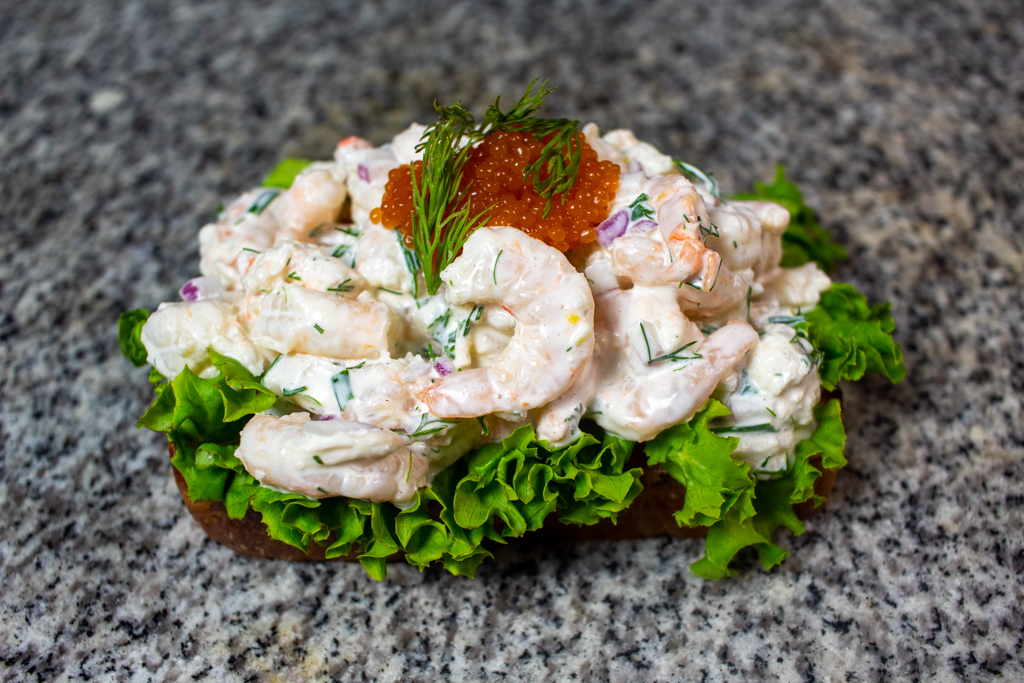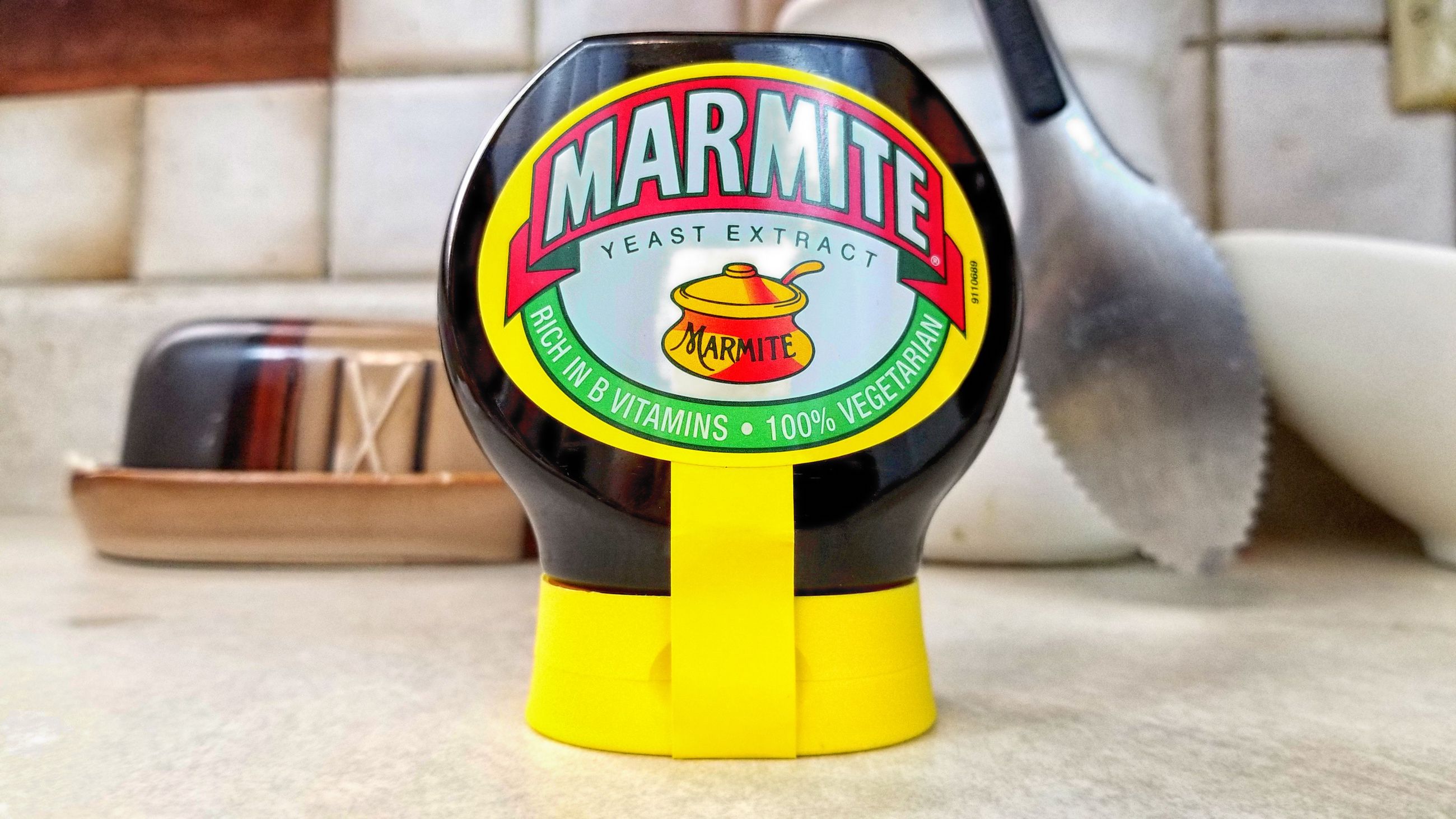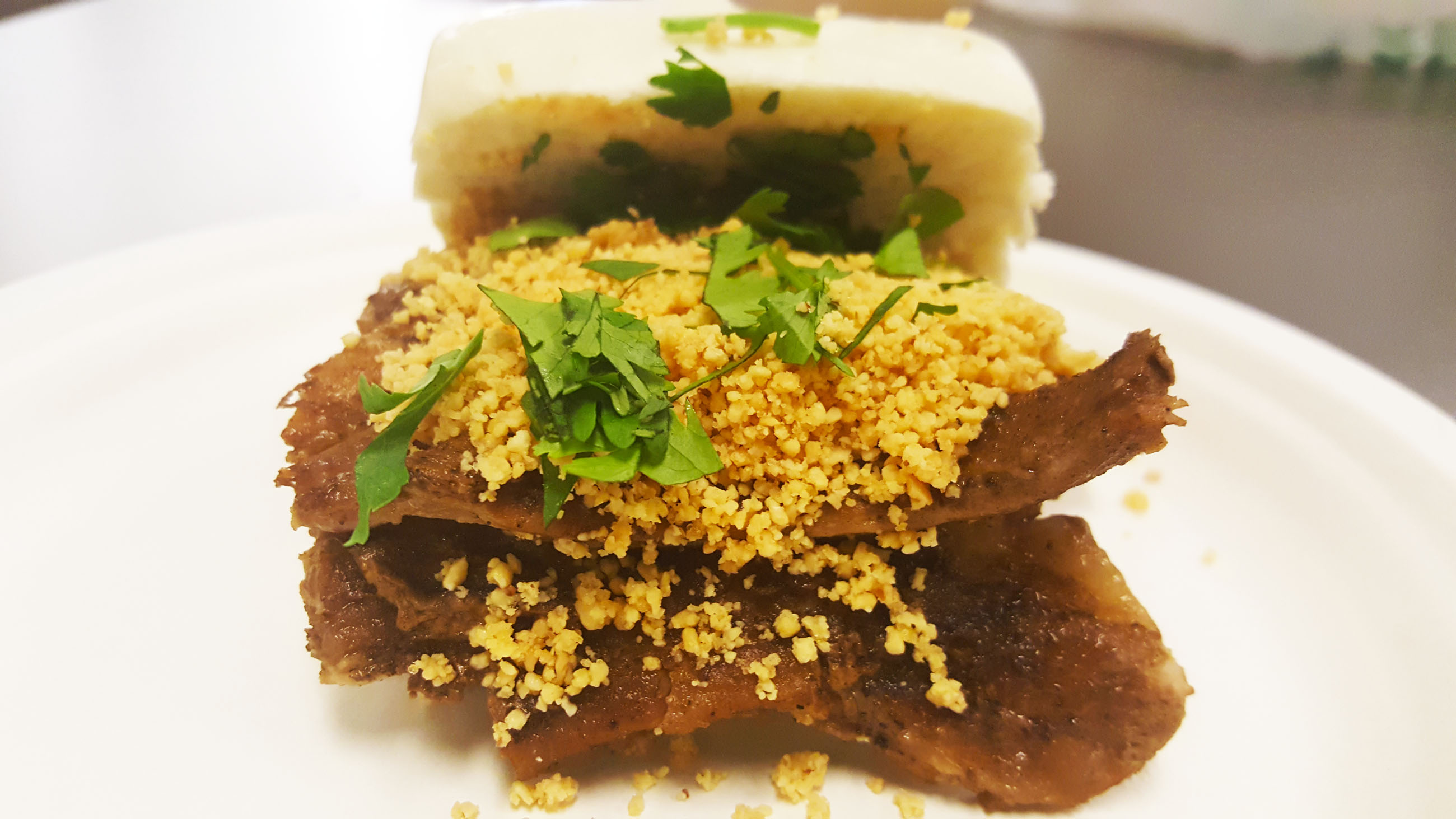Sweden’s Shrimp Toast, Skagen Macka
Tore Wretman’s early life did not hint at the things he would achieve later. A broken home and a poor record at school led to his first apprenticeship at age 16 in the kitchen of a hotel restaurant. A chance encounter at his next job led to another apprenticeship at Maxim’s in Paris, perhaps the most well-known restaurant of that time. Hard luck dogged his every opportunity though. Upon attaining his first job as head chef, he was drafted into the Swedish Army. After some time in the US, he attempted to return to Sweden crewing on a Finnish boat, but was captured by the British Navy and spent most of World War II in England as a result.
Eventually though he returned to Stockholm, where he is credited with revolutionizing the cuisine of Sweden. In addition to opening a series of successful restaurants; encouraging men to take part in the kitchen through his radio show and television segments; and helping to launch Årets Kock in 1983, the Swedish Chef of the Year competition that has helped foster further culinary innovations in his homeland; Tore Wretman is best known for inventing this recipe: Skagen Macka, more often called Toast Skagen.
“Macka” in Swedish is a word for sandwich, a less formal word than the word smörgås from which we get smörgåsbord for a type of buffet and smörgåstårta, a type of sandwich layer cake made from bread and sandwich fillings that we covered here on the Tribunal several years ago. Skagen is the name of a Danish fishing town, the northernmost community on the Jutland peninsula, only a few dozen miles across the North Sea from the Swedish city Gothenburg. The North Sea has traditionally been an abundant source of the small brown-shelled bay shrimp used in the sandwich’s featured shrimp salad, called skagenröra or “Skagen mix.”

As with many nordic sandwiches, skagen macka is served open face, but unlike others it is served on toasted white bread rather than untoasted, buttered rye. The bread is in fact a point of contention with Toast Skagen, as few of the recipes I’ve read have agreed on which bread to use. When they have agreed, though, the recipes have called for sourdough bread.


For this sandwich I made my own attempt at sourdough. Wanting a rectangular loaf rather than a bloomer or a boule, I chose this recipe, which yielded a high-hydration dough so loose that it was next to impossible to do anything with it other than simply dump it into a loaf pan. The bread turned out delicious–though I probably could have left it in the oven 10 minutes longer–but I don’t know if I’ll try that recipe again. (Suggestions welcome!)

Another point of agreement among these recipes was that the bread was generally toasted in a pan, rather than a toaster, or toaster oven, or broiler. There is less consensus though on whether any greenery is needed other than any herbs that end up in the skagenröra. I opted to use green leaf lettuce, which I thought would help protect the toast from getting soggy under the shrimp salad dressing, but many recipes I saw went without.

The recipe I used for my skagenröra was very much like this one, combining mayonnaise and creme fraiche, chives and red onions, salt, white pepper, and plenty of dill. Once it was done and I tasted it though I felt like something was missing. Some dijon mustard, lemon juice, and lemon zest helped boost the flavor to acceptable levels.

Each slice of toasted sourdough gets a couple heaping spoons full of the shrimp salad, a substantial portion mounded onto the bread and then garnished with additional dill, or roe, or lemon, or some combination of the above. Why not all three? thought I.



A note on the roe: a very popular roe product in Sweden is this roe-in-a-tube called Kalles, I was able to buy a tube via Amazon, and it wasn’t until I received it that I realized this was nothing like the roe I expected.

In my previous experience, roe has consisted of tiny briny popping flavor-eggs, the kind of non-sturgeon “caviar” we used in our post on caviar sandwiches. This product, however, is more of a smooth paste made from salted cod roe, smoked and emulsified with sugar and canola oil. It’s salty and smoky and sweet, and provided a huge hit of flavor to the mild shrimp salad.

The combination is a no-brainer–creamy shrimp salad, punctuated by the pungent onion and chive, the sunny lemon juice, the intense citrus punch of the lemon zest, the thin layer of slightly crisp, slightly bitter lettuce separating it from a buttery sourdough slice browned into the world’s most delicious crouton. The roe brings that sunny-day flavor back to the ocean, but an benign, fanciful ocean, a relaxed cruise through calm shallows, no raging tempests above or hungry, lightless depths below
It was good, more than good, and I look forward to eating more of this Kalles roe on toast and in any other configurations I can think of for it. I did want to try the sandwich garnished with the kind of roe I originally pictured though. So I sourced a small jar, pan-toasted another slice of my homemade sourdough, topped it with that green leaf lettuce and plenty of shrimp salad, then garnished it with dill and roe. I ended up with something that looked much more like what I expected.




But if I thought I was missing *real* roe when I ate the sandwich with Kalles, I missed Kalles more when eating the sandwich with real roe. Still, it was a pretty garnish.

Maybe the Kalles is the real discovery for me in pursuing this sandwich. Yet I have a feeling it won’t be long before I’m asked to make this shrimp salad again, or that sourdough bread.

I like sandwiches.
I like a lot of other things too but sandwiches are pretty great











Recent Comments